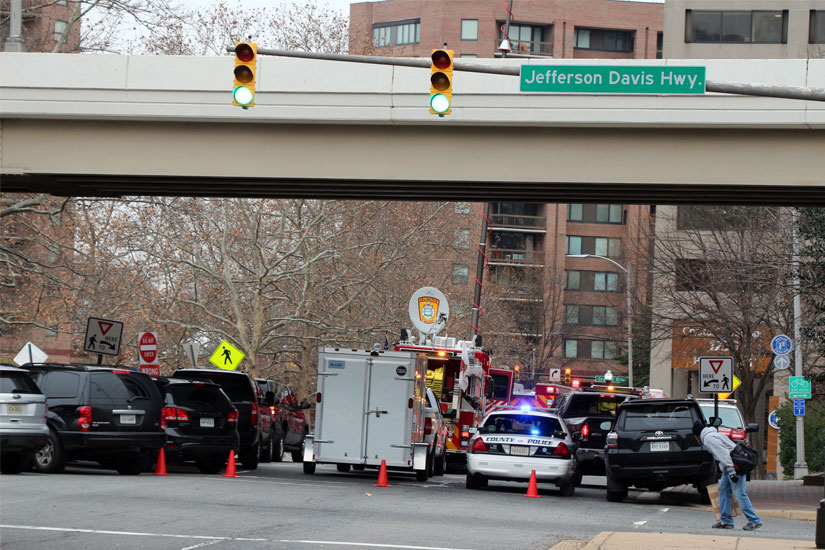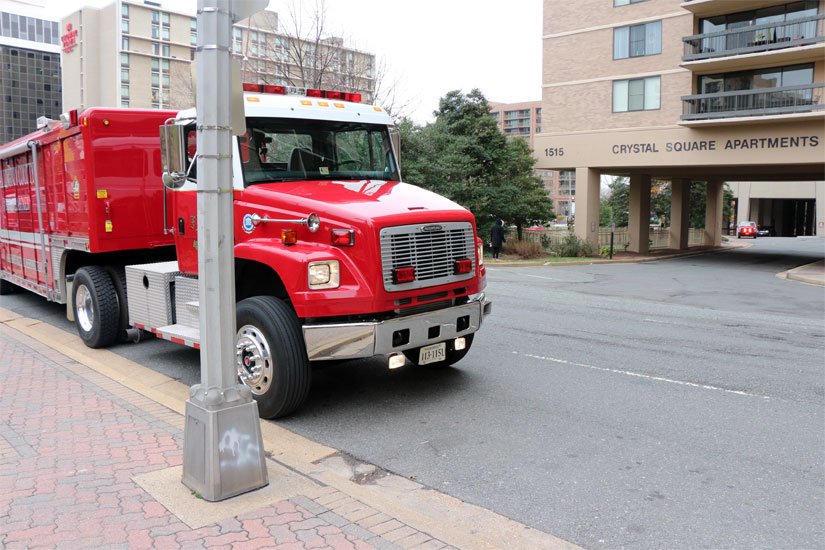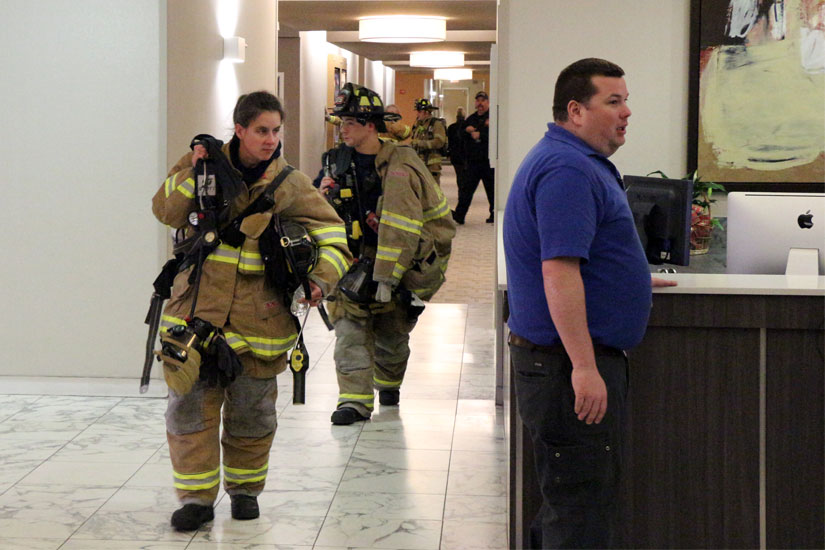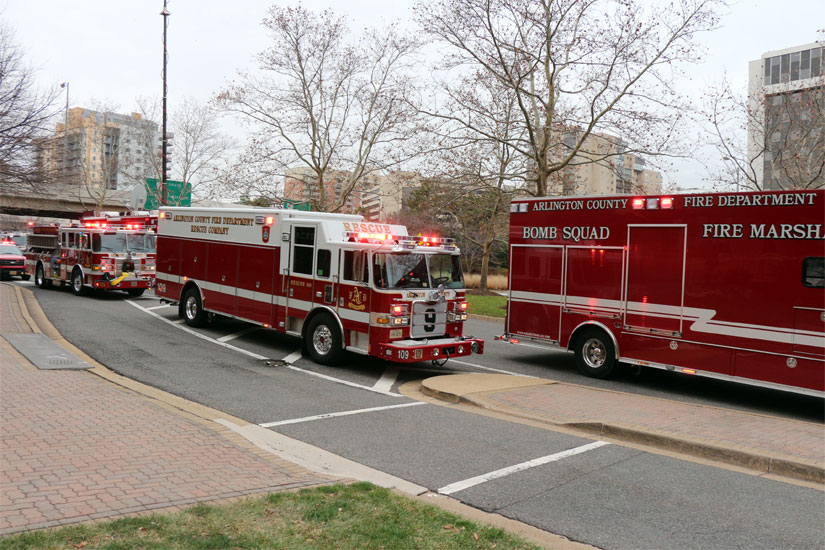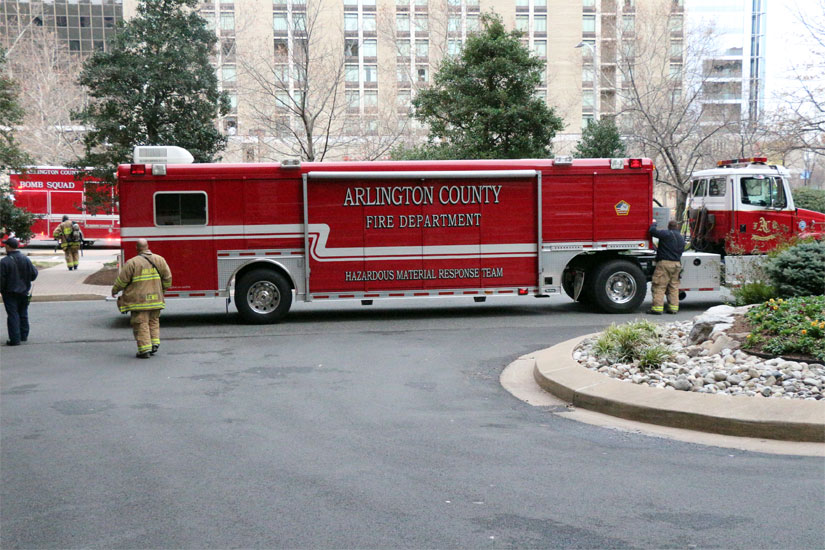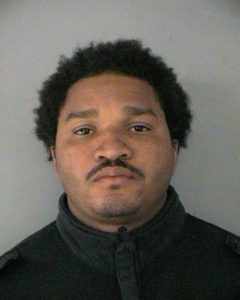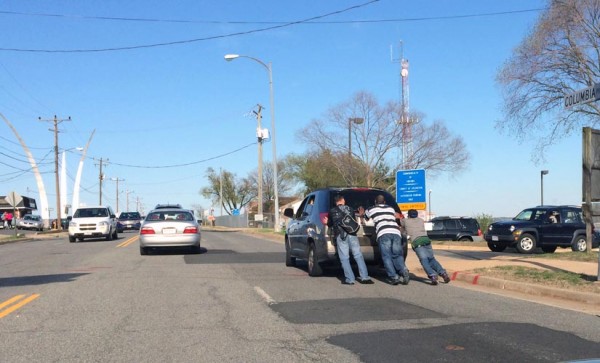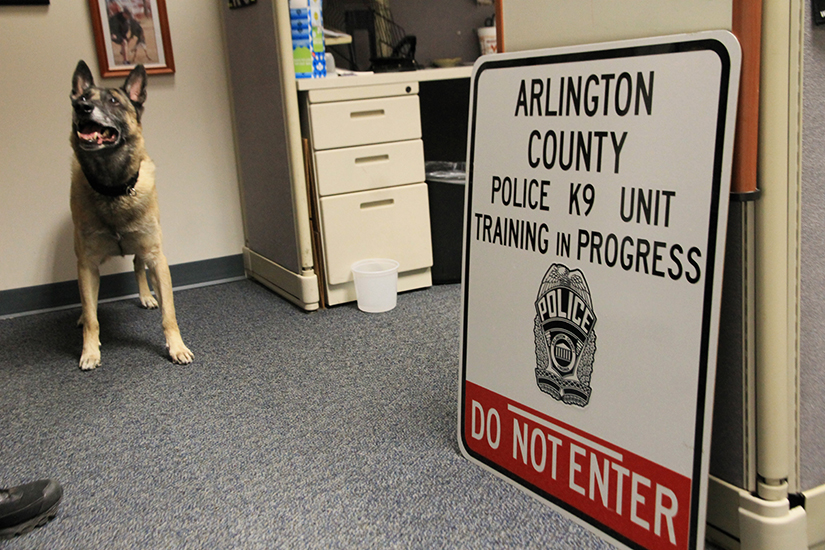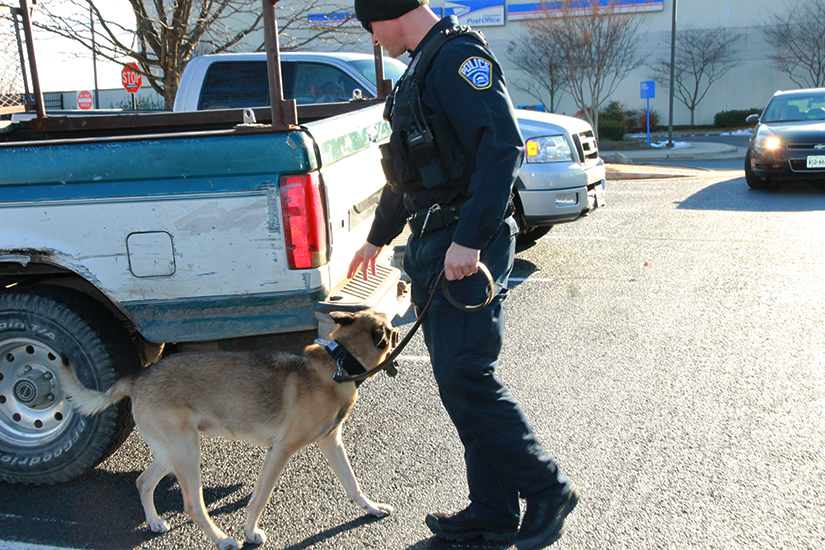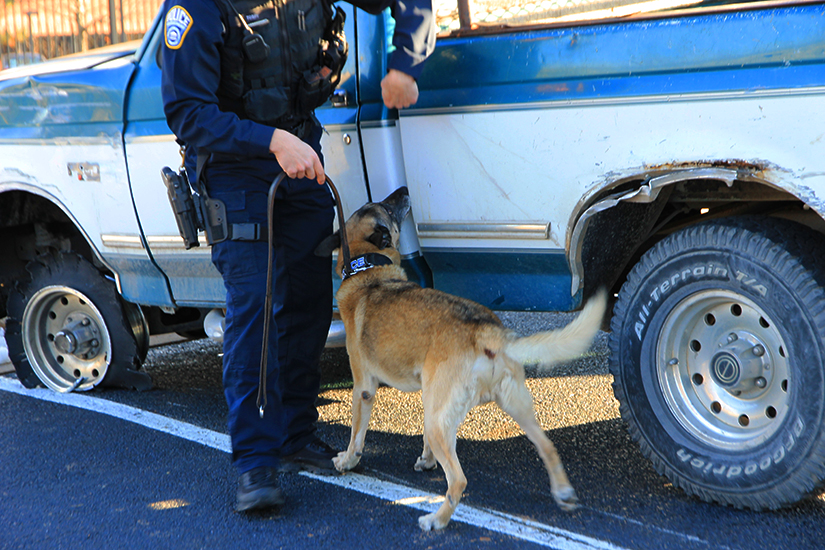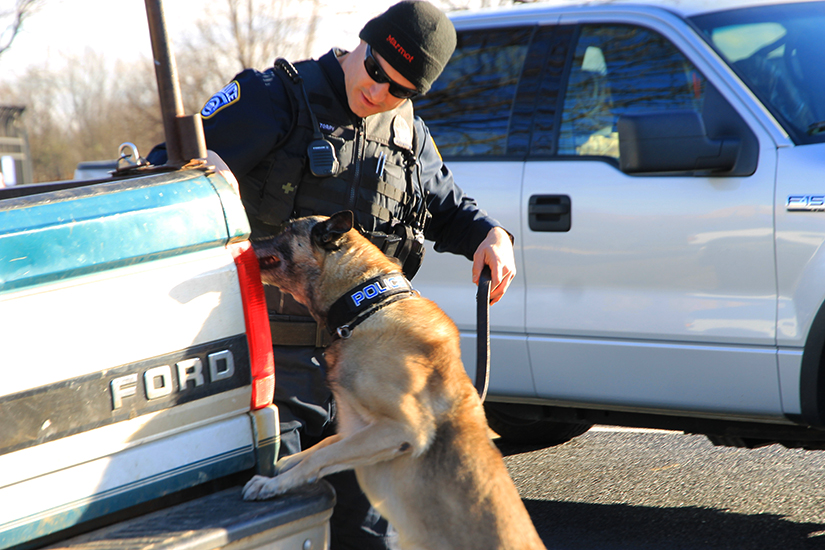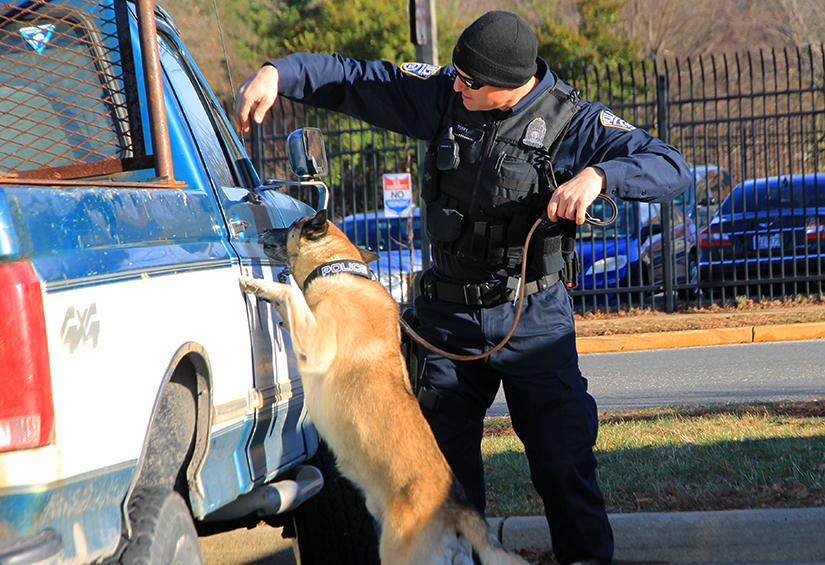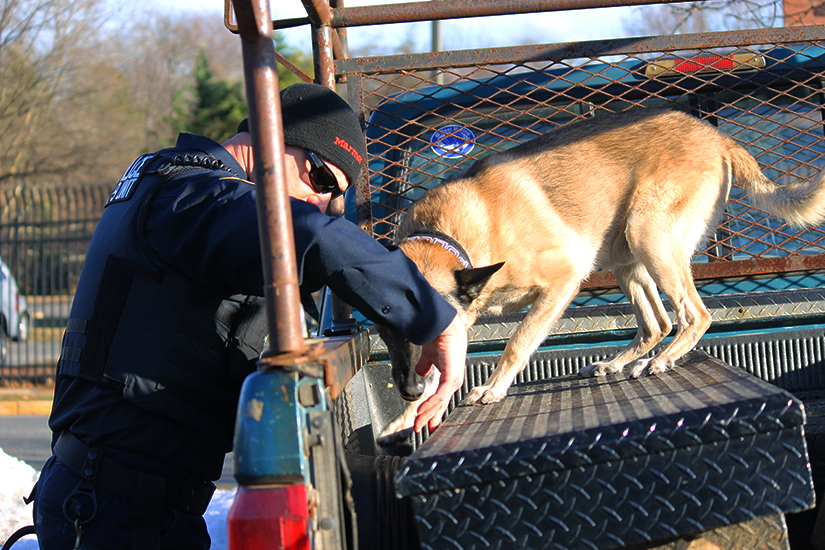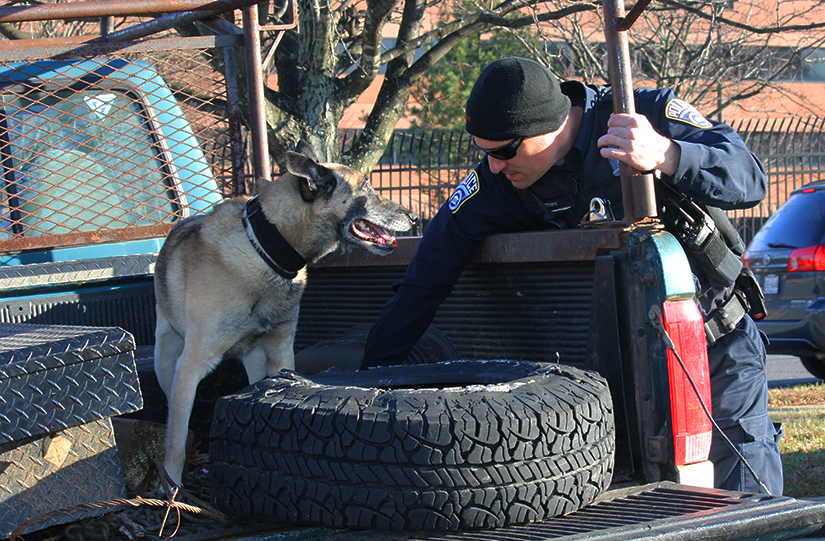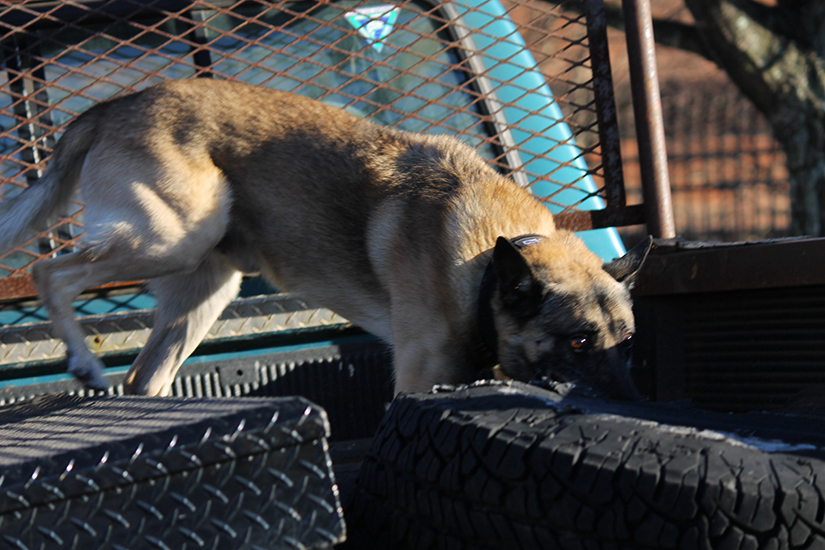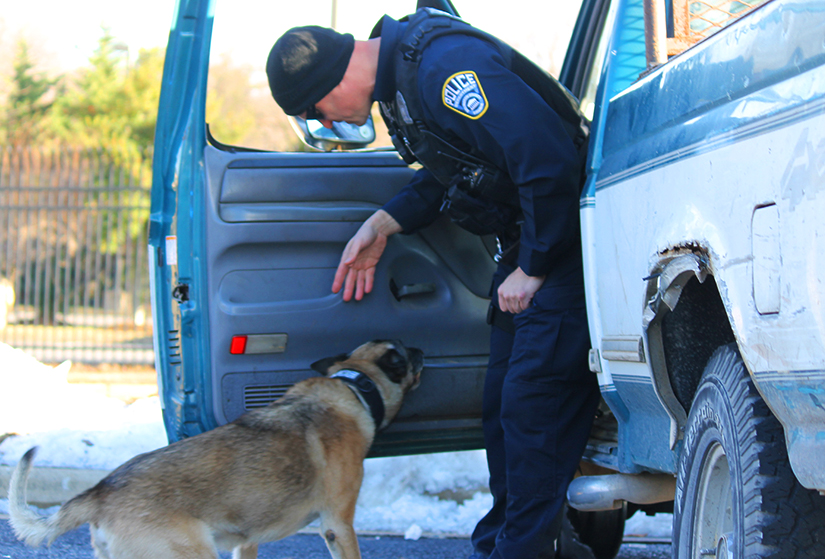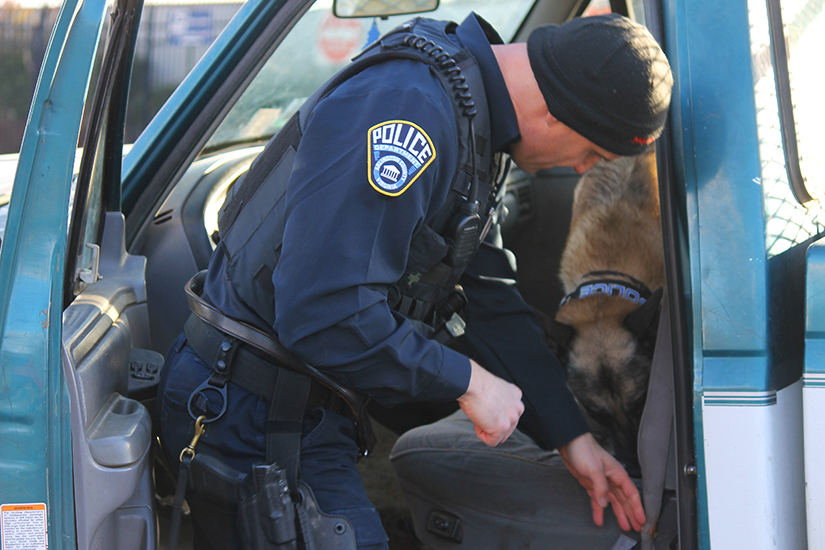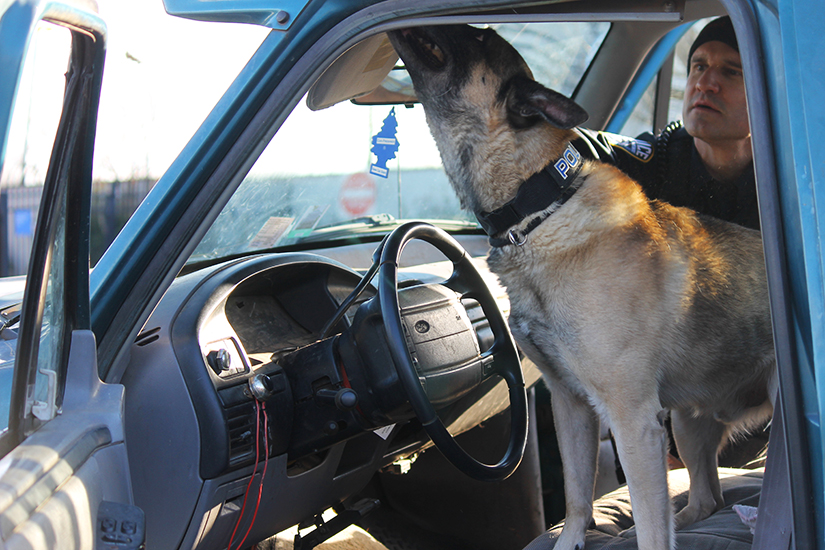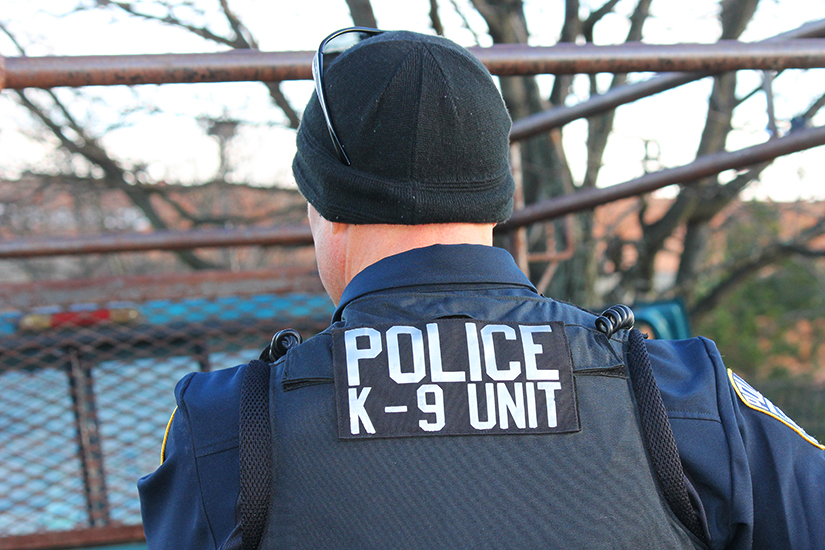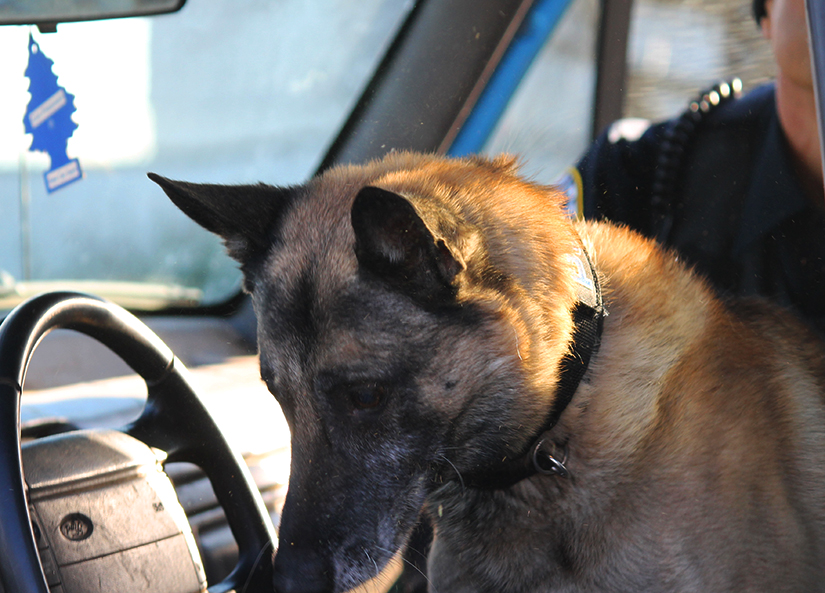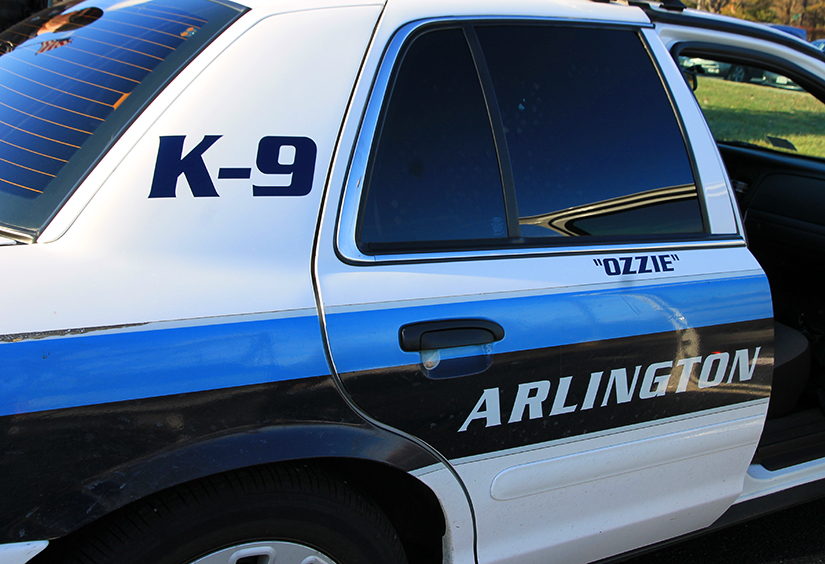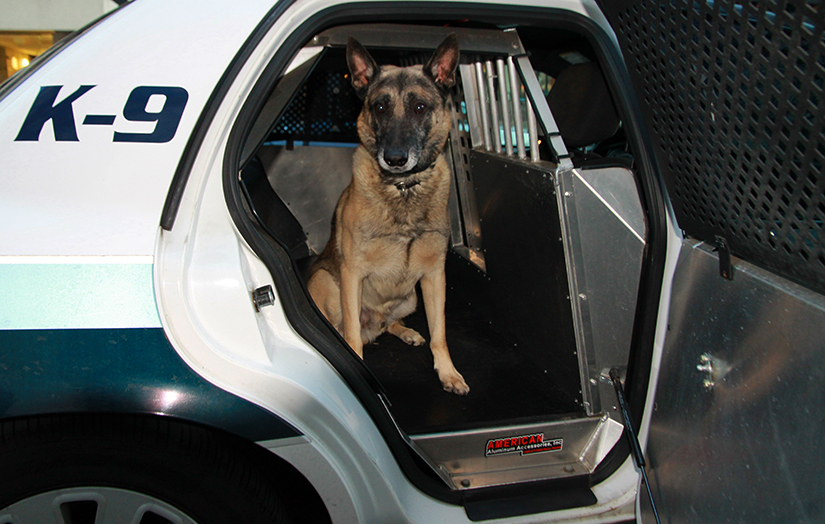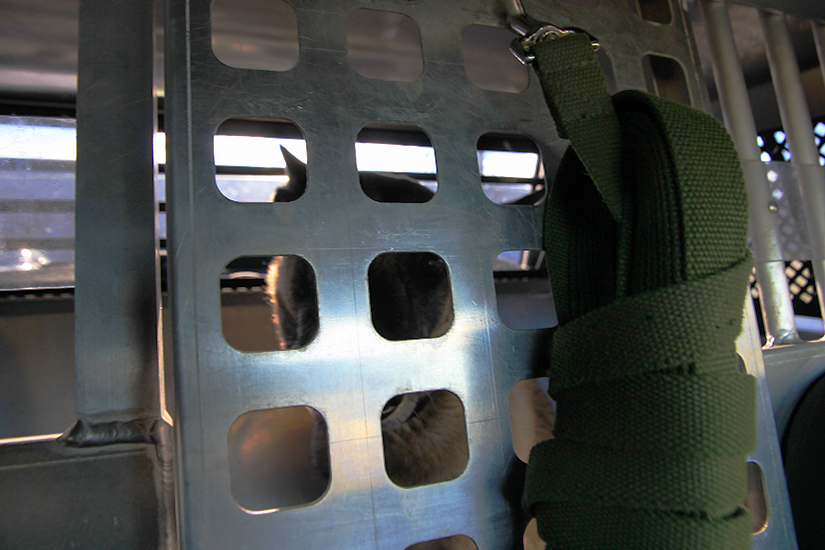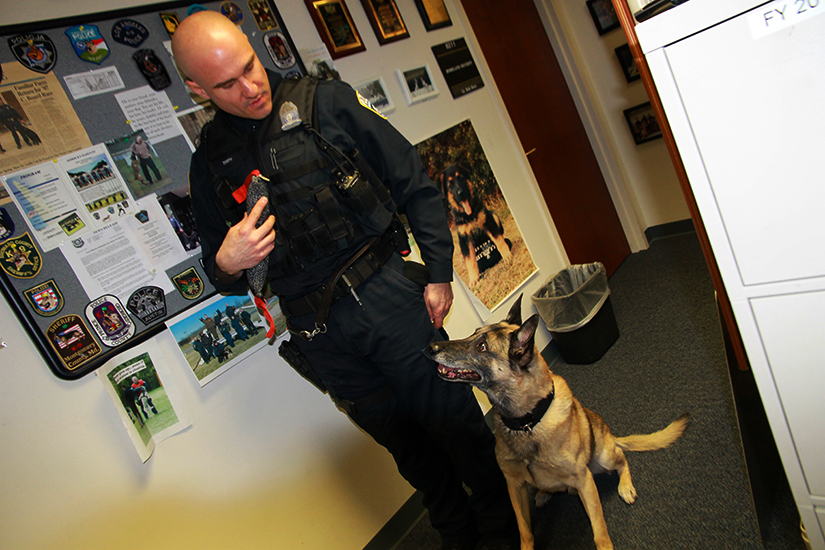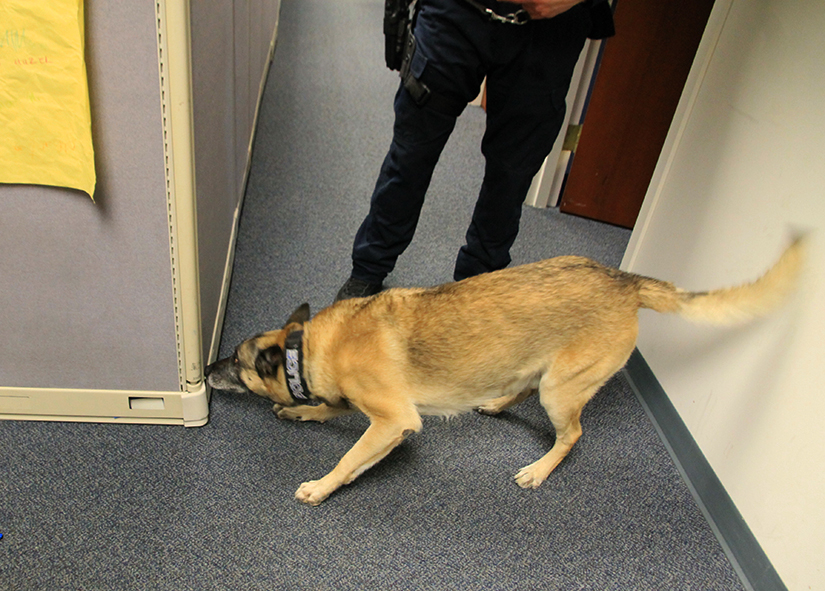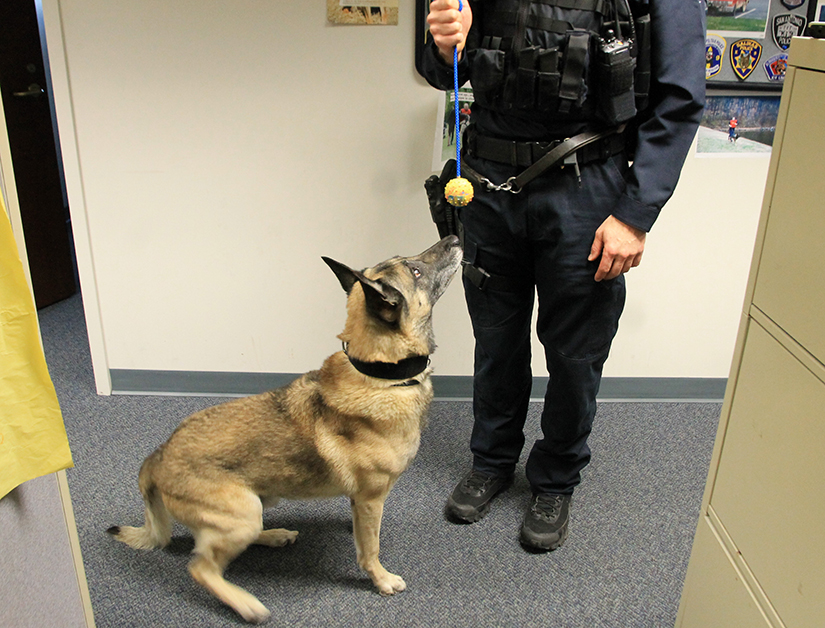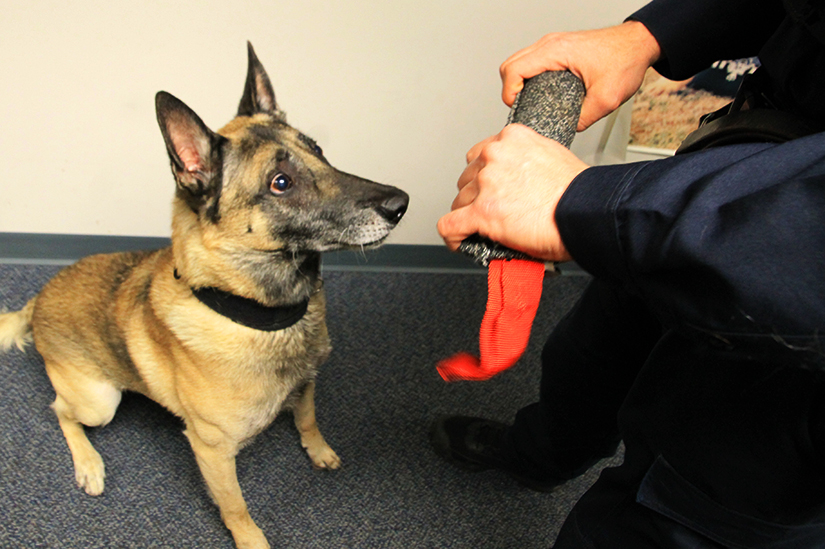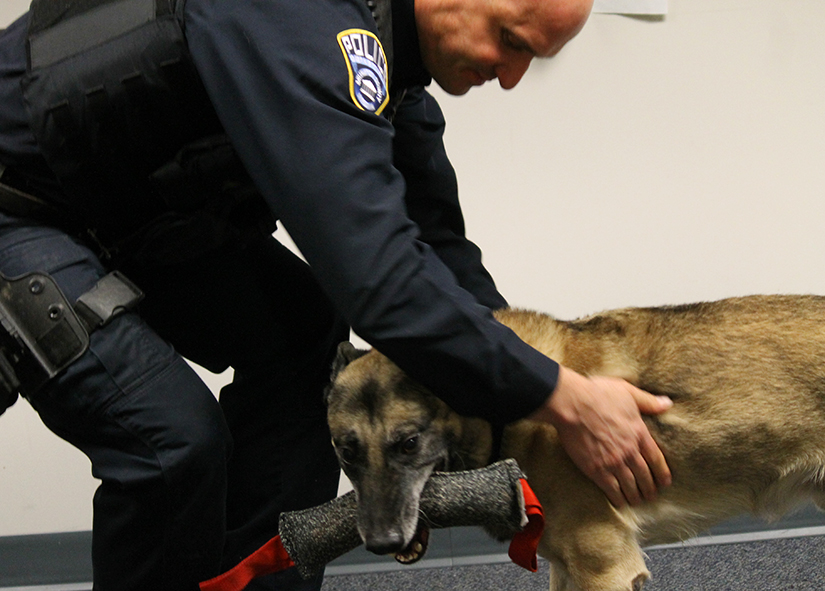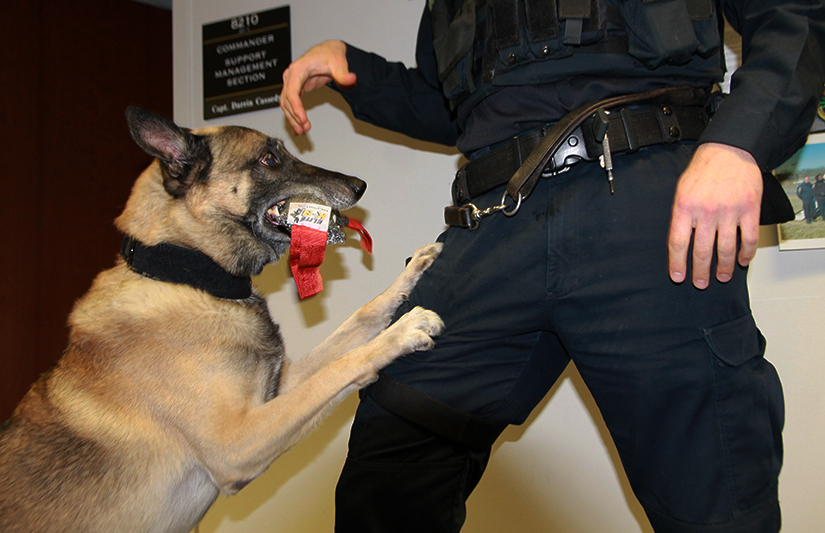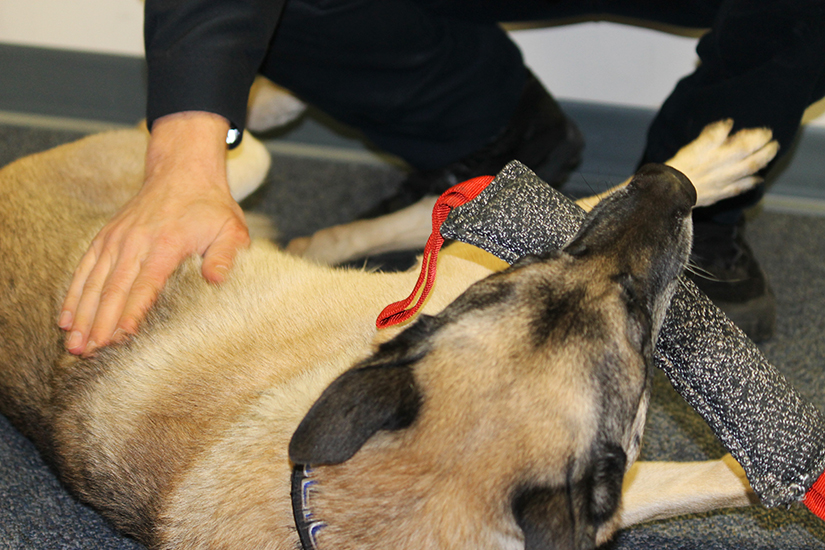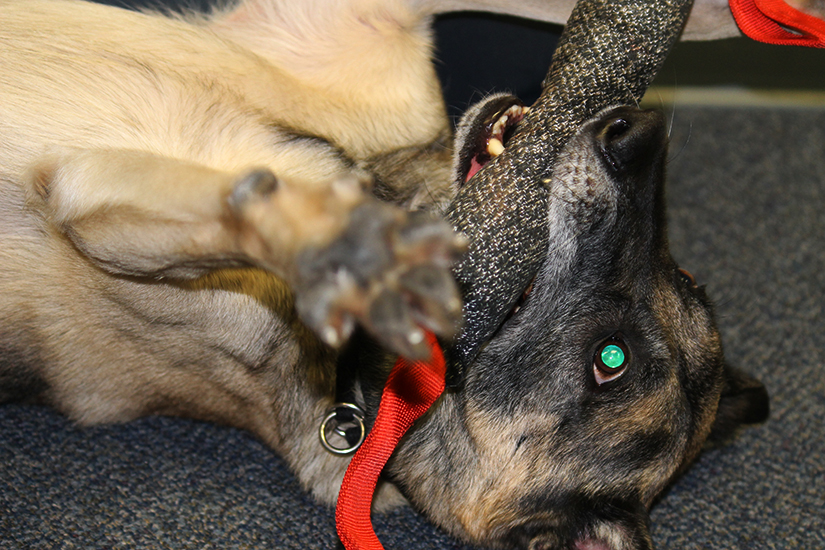“Are you available for a vehicle search, 66 and 495, to assist state?” screeches the police radio.
Cpl. Dave Torpy with the Arlington County Police Department receives a call from dispatch regarding a potential drug situation in Fairfax County. He confirms he can respond to the mutual aid call and heads out to his car to join his partner waiting inside. But his is no ordinary partner. Torpy gets to work with Ozzie, one of ACPD’s K-9 members.
The two head to the scene and find state police waiting for them. State police had pulled over the driver of a truck who was spotted wrecking one of his front wheels when he crashed into a jersey barrier. The driver allegedly kept going until he was pulled over, and police suspected he was under the influence of some sort of substance. Torpy and Ozzie were requested from Arlington because no other K-9 teams were available in Fairfax.
Torpy walks Ozzie to the vehicle and indicates places to sniff by leading his hand close to, but not touching, certain areas. He explains that officers are not allowed to search inside a vehicle without a warrant, but the law allows the investigation of the vehicle’s perimeter. Should a K-9 partner “hit” on a scent of drugs wafting from inside the vehicle to the outside, that’s considered probable cause and officers may perform a full search.
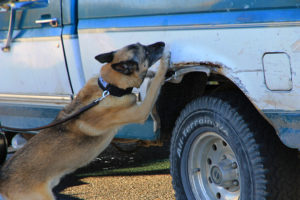 He points out areas where dogs often pick up drug scents emanating from inside, such as along door cracks or crevices in the vehicle body. But Ozzie doesn’t need any leading and pulls Torpy to a different portion of the vehicle. Ozzie stands up on the side of the truck bed, scratching and emitting low growls.
He points out areas where dogs often pick up drug scents emanating from inside, such as along door cracks or crevices in the vehicle body. But Ozzie doesn’t need any leading and pulls Torpy to a different portion of the vehicle. Ozzie stands up on the side of the truck bed, scratching and emitting low growls.
The multiple instances of scratching and barking are exactly what police look for; those actions are what the dogs are trained to do when they smell drugs. That is the permission police need to open this particular vehicle for probable cause and to continue their search.
Ozzie is allowed inside the vehicle and he repeatedly sniffs and scratches at the sun visors and along cracks around the door. Torpy explains those are two common places for suspects to stash drugs quickly when they’re getting pulled over by police.
When it’s clear that Ozzie smells something out of the ordinary, he’s led back to the ACPD cruiser to wait. It’s now time for humans to take over and to continue the search for illicit substances. Once humans enter the equation, dogs typically are not brought back in. Humans searching for items might spread the scent from a “hot” area to places where nothing was hidden. Bringing in a dog at that point could yield, for example, a dozen hits in a vehicle that previously only had one.
“He really likes this vehicle,” Torpy said. “He paid attention to the open window a lot and actually barked and scratched along the seams. If you weren’t initially looking for dope, you wouldn’t necessarily look at the seams. But his nose took us there so we can search further.”
 Ozzie, a Belgian Malinois, is one of the nine dogs in ACPD’s K-9 unit. Seven are “dual purpose” or patrol dogs that assist with building searches, evidence recovery, criminal apprehension and narcotics detection. Two are trained solely to detect explosives; one bomb detection dog belongs to a crime scene agent and the other belongs to a school resource officer.
Ozzie, a Belgian Malinois, is one of the nine dogs in ACPD’s K-9 unit. Seven are “dual purpose” or patrol dogs that assist with building searches, evidence recovery, criminal apprehension and narcotics detection. Two are trained solely to detect explosives; one bomb detection dog belongs to a crime scene agent and the other belongs to a school resource officer.
Most of the dogs are purchased from reputable breeders in Europe, but the two bomb dogs were rescues. One was adopted from a shelter in Loudoun County and the other was donated by a family that could no longer care for the dog.
Sgt. John McCarthy is also a dog handler and supervises the K-9 unit. McCarthy goes out on calls with his partner, Charly, just like all the other K-9 unit members, but he also oversees the unit’s operations. He handles scheduling, helps with handler and dog hiring, and purchases supplies like food and toys.
Prior to his appointment in 2007, the department did not have a supervisor for the unit. Arlington County Police Chief M. Douglas Scott was instrumental in adding the position and with expanding the K-9 unit to allow for nearly 24-7 police dog coverage.
“When I was doing a review of the units, I saw at the time we only had four dogs. They were not really a full unit they were just on squads,” said Scott. “I didn’t think it was an effective way to run the program.”
Scott joined the department in 2003 and approved the addition of two dual purpose dogs in 2004, two bomb detecting dogs in 2006, and McCarthy’s supervisory position including a dog in 2007.
“We’ve done it all gradually by converting existing positions,” said Scott. “I didn’t want to be going to the County Manager or County Board asking to add new positions. I made the case internally and started the expansion that way.”
The current price of a police dog runs around $7,000 plus the cost of continuous training. Those working in the unit, along with Chief Scott, believe it’s a wise investment.
“K-9 to me has always been something I would describe as a force multiplier. Their ability to get in and search a building, do a track, is so much better than using multiple officers or for officers to be doing a blind search. They’ve proven themselves time and time again,” Scott said. “It’s well worth the investment.”
In 2013, the ACPD K-9 unit responded to 495 calls in Arlington County and 27 mutual aid calls in neighboring jurisdictions. The dogs helped apprehend 22 criminals, found narcotics in 26 vehicles or residences and found narcotics 23 times during sweeps of packages at United States Postal Service facilities. (more…)




